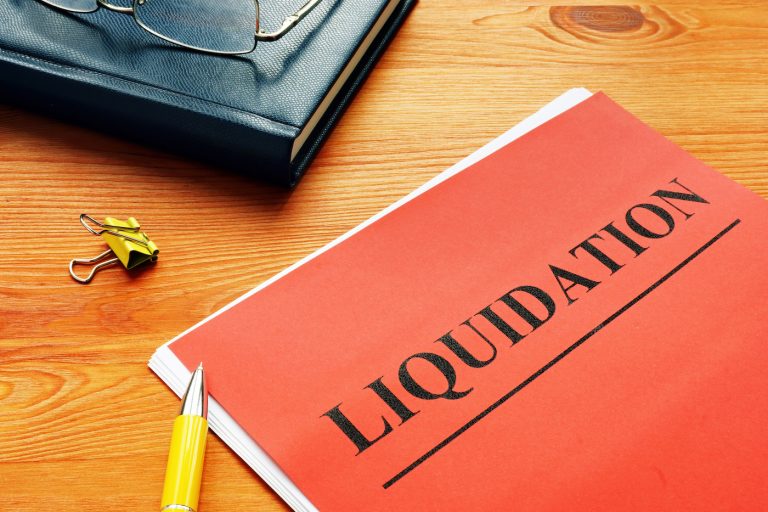Covid-19 not only created a health crisis, but it created a wealth crisis too. Despite support from the Government over the last 18 months many small businesses will continue to face challenges in the coming months.
 John Bell is director and founder of insolvency firm Clarke Bell. His advice to any owner of a company that is having cashflow problems or struggling with too much debt is to take control of their situation and seek professional help as soon as possible.
John Bell is director and founder of insolvency firm Clarke Bell. His advice to any owner of a company that is having cashflow problems or struggling with too much debt is to take control of their situation and seek professional help as soon as possible.
Here John explains the difference between the dissolution of a company and liquidation.
What is dissolution?
Dissolution is a process that legally marks the end of a company. It is a voluntary process initiated by the company director when they wish to legally close down their company and have it struck off the Companies House register.
There is a range of reasons to consider dissolving your company, whether it has been a success and has now served its purpose, or perhaps it never grew as you desired and has been sitting dormant.
To begin the dissolution process, the director must complete a DS01 form which costs £10 and is paid to Companies House. Once this form has been completed, processed and returned, the company will be closed.
Although this is usually a voluntary process, dissolution can also be forced on a company for reasons of non-compliance. This might occur because the company doesn’t have a director in place or it has failed to file annual returns or annual accounts.
Which companies can be dissolved?
Any company can be dissolved if it meets the following criteria:
- It hasn’t changed its name in the last 3 months
- It hasn’t traded or sold off any stock in the last 3 months
- It hasn’t been threatened with liquidation and doesn’t have any other agreements in place with creditors like a Company Voluntary Arrangement (CVA)
- It is solvent
Why choose to dissolve your company?
There are many reasons a director might choose to dissolve their company. It might be that they are looking to retire, or they may no longer have a need for the business and therefore want to close it. If this is the case, dissolving the company is an easy way to close it down.
Is dissolving a company the same as liquidating a company?
Dissolution and liquidation are terms that are often mistakenly used interchangeably. Although both dissolution and liquidation end in the company being closed, they are two different processes.
Dissolution is a way to close a company where no debt is present. A company can also be dissolved where any outstanding debts can be settled in full within 12 months – but in this situation, the company director would need to swear a ‘Declaration of Solvency’ (in front of a solicitor) confirming that the company will be able to repay its debts within that period.
However, liquidation is different. When a company has assets and liabilities that need to be dealt with, liquidation is usually the best option.
What is liquidation?
Liquidation can only be carried out by a licensed Insolvency Practitioner who will oversee the entire process on the directors’ behalf. There are two main types of voluntary liquidation: Creditors’ Voluntary Liquidation (CVL) and Members’ Voluntary Liquidation (MVL) which are both initiated by company directors.
There is also a third type of liquidation, compulsory liquidation, which is when a company is forced to liquidate by the courts. This is because they owe money to creditors who have issued a winding-up petition to the court to get back what they are owed. Just as it sounds, this is the most serious form of liquidation and can have a series of negative impacts on the company director.
How do I dissolve my company?
The process of dissolving a company is carried out by submitting a DS01 form. This must be signed by the majority of directors, or all of them if there is only one or two.
This form must be sent off to Companies House where it is processed. A copy must also be sent to all notifiable parties which includes any creditors, employees and shareholders. This process can now also be carried out online through the Companies House website.
Next, a notice will be placed in The Gazette announcing the decision to dissolve your company. Once this notice is published, the company will be dissolved 3 months later if no objections have been made. The Gazette will then run a final notice confirming that your company has been dissolved.
Sometimes a third party will object to the dissolution. The most common reason is when HMRC suspects that your company has unpaid tax liabilities, like corporation tax or VAT.
If your strike-off is rejected, you will be sent a letter stating the reason for the rejection. If you intend on paying off your creditors, you should ensure that when you arrange for the funds to do this, it isn’t viewed as your company is trading – as this could lead to your application for dissolution being denied.
If you can’t pay the outstanding debts, then your company is deemed as being ‘insolvent’. In this situation, you should speak to an Insolvency Practitioner who will advise you on the best thing for you to do now.
The best course of action is likely to be a Creditors’ Voluntary Liquidation (CVL). This will ensure your company is formally liquidated while acknowledging all your duties as a director to your creditors and dealing with all the business debts of the company.
How do I prepare to dissolve my company?
There are a number of tasks that the director must do before applying to dissolve their company.
These include:
- Paying any outstanding taxes including corporation tax, PAYE and National Insurance.
- If you have any employees, you must pay their final wages
- You will need to ensure that business assets are distributed amongst shareholders
- You will need to file accounts and a company tax return with HMRC. Here, you must state that these are the final accounts due to dissolution
- You will need to ask HMRC to close down the company’s payroll scheme and deregister for VAT if you are VAT registered
- Close company bank accounts
- Pay any outstanding debts or show that your company can settle these debts
- Notify interested parties and HMRC of your decision. This has to be done within 7 days of filing your dissolution application
To dissolve your company, you can either do this yourself or with your accountant’s help. You won’t need to appoint an Insolvency Practitioner.
Be aware
The Insolvency Service has the power to investigate directors who dissolve their company to evade their debts and liabilities – otherwise known as ‘phoenixing’.
New rules empower the Insolvency Service to investigate and punish rogue directors. If a director dissolves their business to avoid paying their liabilities, this will be treated as fraudulent behaviour. The Insolvency Service can then conduct an investigation. If the investigation confirms a fraudulent dissolution, the court will be entitled to demand compensation be paid from the rogue director and to their creditors.
Court-enforced debt repayment is only one punishment, however. Should a director be found in breach of this new rule, a range of sanctions may be applied. This includes disqualification from being a company director for a period of up to 15 years.
More details can be seen here https://www.clarkebell.com/blog/new-rule-insolvency-service
Instead of (wrongly) trying to dissolve it, the better option is to acknowledge the fact that the company has debts that it cannot pay and to find an Insolvency Practitioner who will place your company through a Creditors’ Voluntary Liquidation (CVL) process. There are Insolvency Practitioners who are not expensive and can provide you with a friendly, professional service and an affordable CVL process.
You should not dissolve your company if it does not meet the criteria mentioned above. Some directors think that it can be a ‘cunning’ way to close down a company that has some debts. It is not.

